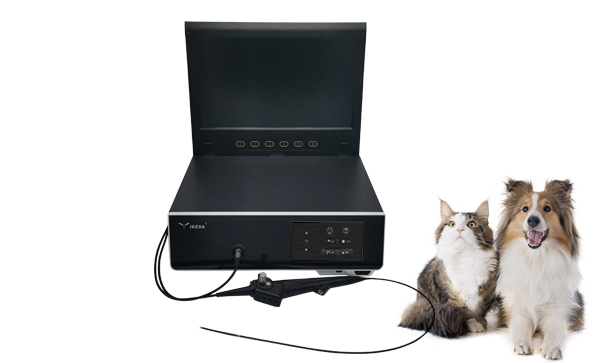People often say that animals are good friends of mankind, bringing us countless joys and countless help, but what should we do when they are in pain? In the past, even minor gastrointestinal diseases required laparotomy. The cold scalpel cuts the hair, skin, muscle layer and abdominal cavity, and wounds over 10cm have brought endless pain to the animals. In fact, we have A more kinder choice, anesthesia, endoscopy, examination, pathological section, treatment, appearance, after the dream, it is almost no extra pain to heal, the following is an introduction to the application of animal endoscope in the upper gastrointestinal examination of dogs and cats.
As the standard of care in veterinary medicine improves with advancing technology, clients expect a higher level of care and even seek out minimally invasive procedures for their pets. Endoscopy is a versatile tool that provides a nonsurgical option for diagnosis and treatment of a variety of disease conditions.

At present, the endoscopes used in dogs and cats at home and abroad mainly include laparoscopy, thoracoscopy, gastroscopy, colonoscopy, colonoscopy and arthroscopy. Laparoscopy and gastroscopy are most commonly used in dog and cat diseases.
Application of animal endoscope in upper gastrointestinal examination of dogs and cats:
1. Many symptoms of upper gastrointestinal diseases are suitable for gastroscopy. For example: nausea, difficulty swallowing, vomiting, diarrhea, salivation and changes in breath smell. In addition, when checking for foreign bodies in the trachea or esophagus, and assessing the sensitivity of the affected animal to food or weightlessness, animal gastroscopy can also be used for inspection.
2. Direct naked eye observation on the mucosal surface of esophagus, stomach and duodenum;
3. Make a pathological biopsy of the mucosa to determine the degree of chronic gastritis and distinguish benign and malignant ulcer lesions. Determine the cause of upper gastrointestinal bleeding and early detection of gastric cancer.
4. Removal of foreign bodies in the esophagus or stomach;
5. Some cases of upper gastrointestinal bleeding and gastric polyps can be treated under gastroscope;
6. Drug injection: Through the endoscopic biopsy hole, the endoscopic injection needle is sent into the stomach, and drugs such as sclerosing agents, anticancer drugs, etc. can be injected into the lesion under direct vision;
7. Minimally invasive surgery;
Precautions for animal endoscope in upper gastrointestinal examination of dogs and cats:
1. When performing upper gastrointestinal endoscopy, it is best for animals to eat water for more than 8 hours;
2. Take accurate anesthesia measures for the animal, lying on the left side;
3. Use an opener to prevent animals from damaging the body of the endoscope;
4. Closely observe animal vital signs during operation;
5. Eat for 12-24 hours after operation;